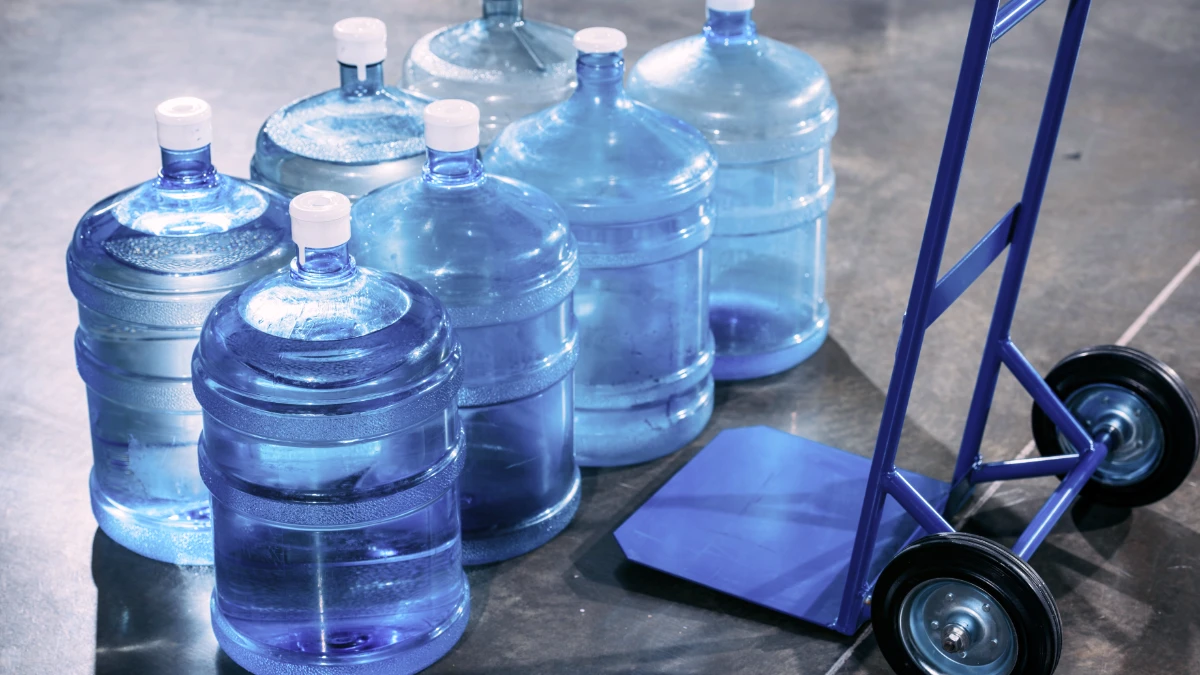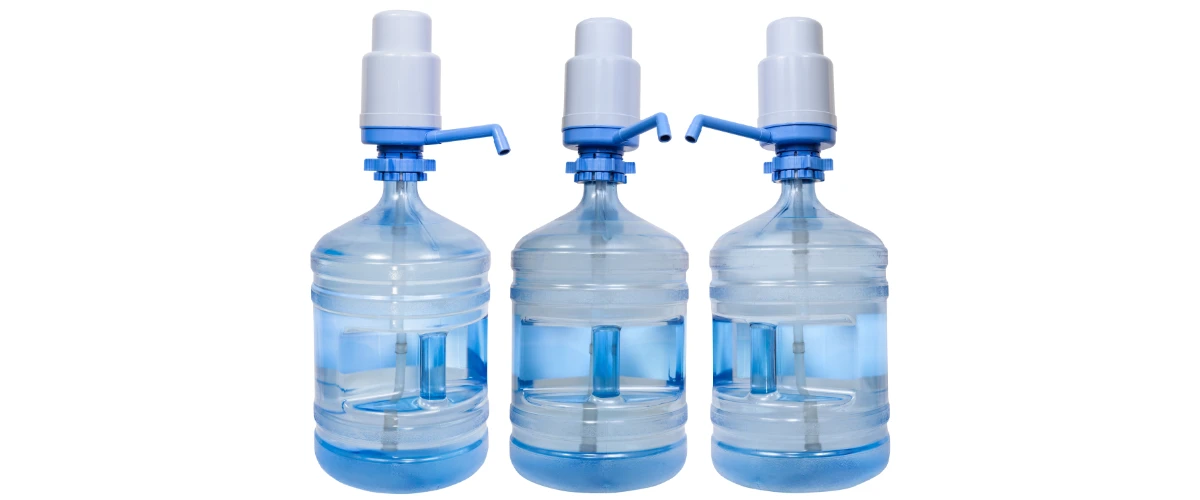Storing adequate drinking water is essential for emergency preparedness. Large 5-gallon water bottles are convenient for long-term storage and can sustain individuals and families through extended emergencies. This guide will walk you through how to store them correctly, determine the amount of water needed per person, and access water from the bottles without a dispenser.

Why Choose 5-Gallon Water Bottles?
5-gallon water bottles offer several advantages:
- Capacity: Each bottle provides enough water for two people for two days.
- Durability: Made of heavy-duty plastic, they withstand storage and handling better than smaller bottles.
- Space Efficiency: Though large, they are stackable and compact compared to individual water bottles, making them ideal for households with limited space.
- Readily Available: 5 gallon water bottles are readily available at local grocery stores, homegoods stores and often via local delivery services.
Determining How Much Water to Store
The Federal Emergency Management Agency (FEMA) and the Centers for Disease Control and Prevention (CDC) recommend storing one gallon of water per person per day. This includes drinking, cooking, and hygiene. For a 14-day emergency supply, plan on:
- 14 gallons per person (for drinking and cooking only)
- Extra gallons if you anticipate needing water for hygiene, pets, or other purposes
For example, a family of four would need 56 gallons for drinking and cooking alone over 14 days, requiring about 12 of the 5-gallon bottles. Adding water for other needs may increase the total to about 15-20 bottles.
Best Practices for Storing 5-Gallon Water Bottles
To ensure your water remains safe and easily accessible during an emergency, follow these storage guidelines:
- Store in a Cool, Dark Place
- Water bottles should be kept away from sunlight and heat, as exposure can lead to algae growth and potentially degrade the plastic. An ideal storage area is a basement or closet that maintains a stable, cool temperature between 50°F and 70°F.
- Keep Bottles Off the Ground
- Placing bottles on a wooden pallet or shelving unit reduces the risk of contamination from moisture on floors, especially in areas with high humidity.
- Rotate and Label Bottles
- Even though water itself doesn’t spoil, the containers can degrade. Aim to rotate your water supply every 6-12 months, checking for any leaks or cloudiness. Label each bottle with the date of storage to keep track of freshness and facilitate rotation.
- Seal Bottles Tightly
- Ensure caps are tightly sealed to prevent contamination. While commercially sealed bottles are typically safe from contaminants, any opened bottles should be consumed quickly and sanitized before re-storage.
- Consider Accessibility in Storage
- In emergencies, accessing stored water quickly is vital. Arrange bottles in a way that they are easy to reach, and avoid stacking them too high, as they can become difficult to lift or risk tipping over.

How to Access Water Without a Dispenser
In emergencies, you may not have access to a water dispenser, but there are simple ways to access the water from 5-gallon bottles safely:
- Manual Water Pump
- Affordable and portable, manual water pumps fit onto the top of standard 5-gallon bottles, allowing you to pump water out by hand. These pumps are lightweight, easy to use, and can be stored with your emergency supplies.
- Pouring Directly from the Bottle
- If you don’t have a pump, you can carefully tip the bottle to pour water. Here’s how:
- Set the bottle on a sturdy surface and slowly tilt it forward over a container or pitcher.
- Pour slowly to avoid spills and control the water flow, as the large opening can release water quickly.
- For better control, lay the bottle on its side, remove the cap, and use a small, sanitized cup to scoop water out as needed.
- If you don’t have a pump, you can carefully tip the bottle to pour water. Here’s how:
- Using a Spigot Attachment
- Some 5-gallon bottles are compatible with spigot attachments that screw onto the opening, allowing water to flow out like a faucet. Spigots are convenient, reusable, and easy to use without lifting the bottle. Ensure they’re tightly sealed when not in use to prevent leaks or contamination.
- Portable Water Filter for Opened Bottles
- If you need to access water from an opened bottle, consider using a portable water filter like a LifeStraw or Sawyer Mini. These filters can help purify the water, especially if there is a risk of contamination due to prolonged exposure to air or surfaces.
Additional Tips for Safe Water Storage and Usage
- Sanitize Bottles if Reusing
- If you’re refilling 5-gallon bottles rather than purchasing pre-sealed ones, sanitize them first by rinsing with a solution of 1 teaspoon of bleach per gallon of water. Let it sit for a minute, rinse thoroughly, and allow it to air dry before filling with fresh water.
- Keep a Backup Supply
- Besides your main supply of 5-gallon bottles, consider keeping a few smaller water containers or single-use water packets as a backup. These can be more portable if you need to leave your location or ration smaller amounts.
- Monitor for Signs of Degradation
- Even in cool, dark storage conditions, plastic containers can degrade over time. Watch for any signs of cloudiness, leaks, or odor, which could indicate that the container’s plastic has weakened. Rotate bottles out if they show signs of wear, especially if they are not BPA-free.
- Use Conservatively in Emergencies
- In a crisis, ration your water usage by using it primarily for drinking and essential hygiene. Use disposable wipes for cleaning hands, save leftover cooking water for washing, and avoid unnecessary waste to extend your supply.
Storing 5-gallon water bottles is a practical way to ensure a steady water supply during emergencies. By following proper storage practices, determining the correct amount per person, and preparing for safe access without a dispenser, you can maintain a reliable water source to meet essential needs. Investing in tools like a manual pump or spigot attachment can also improve accessibility. With thoughtful planning, your emergency water supply can be a lifeline for your household, providing peace of mind in times of uncertainty.